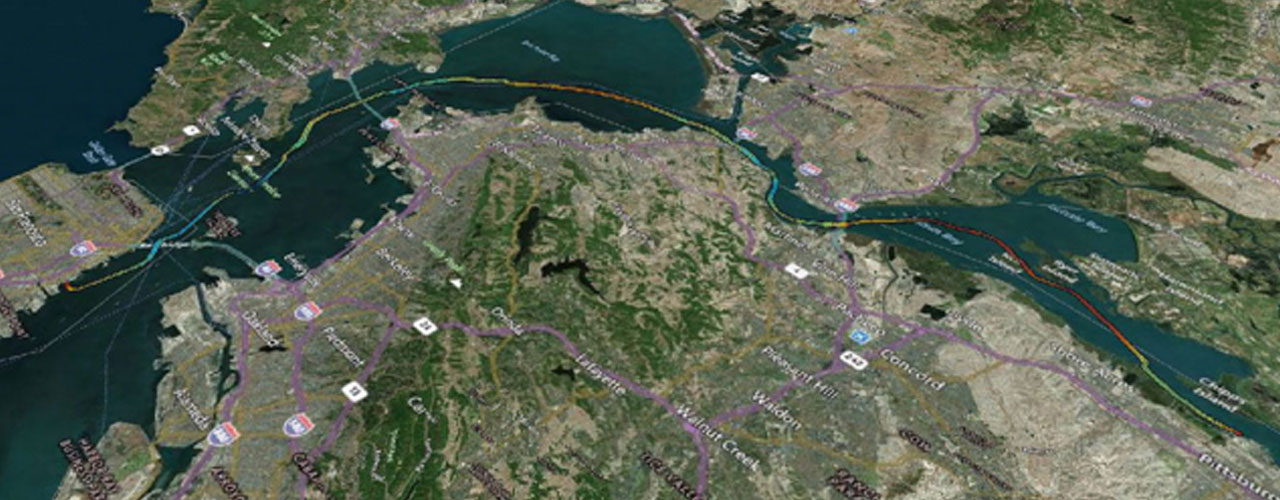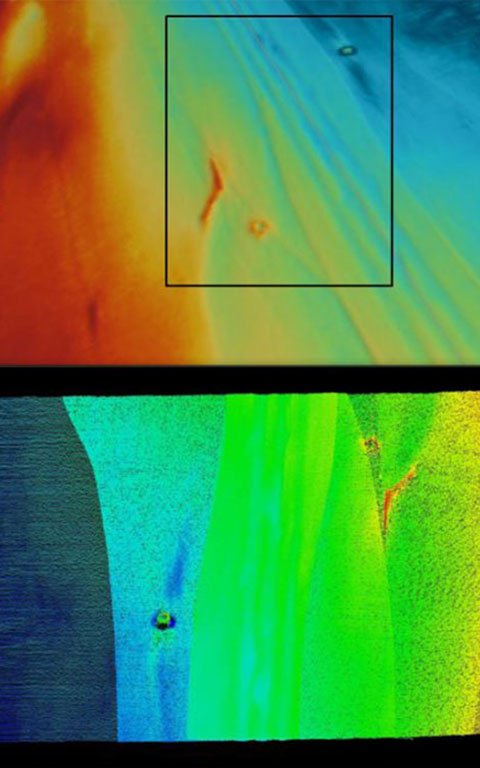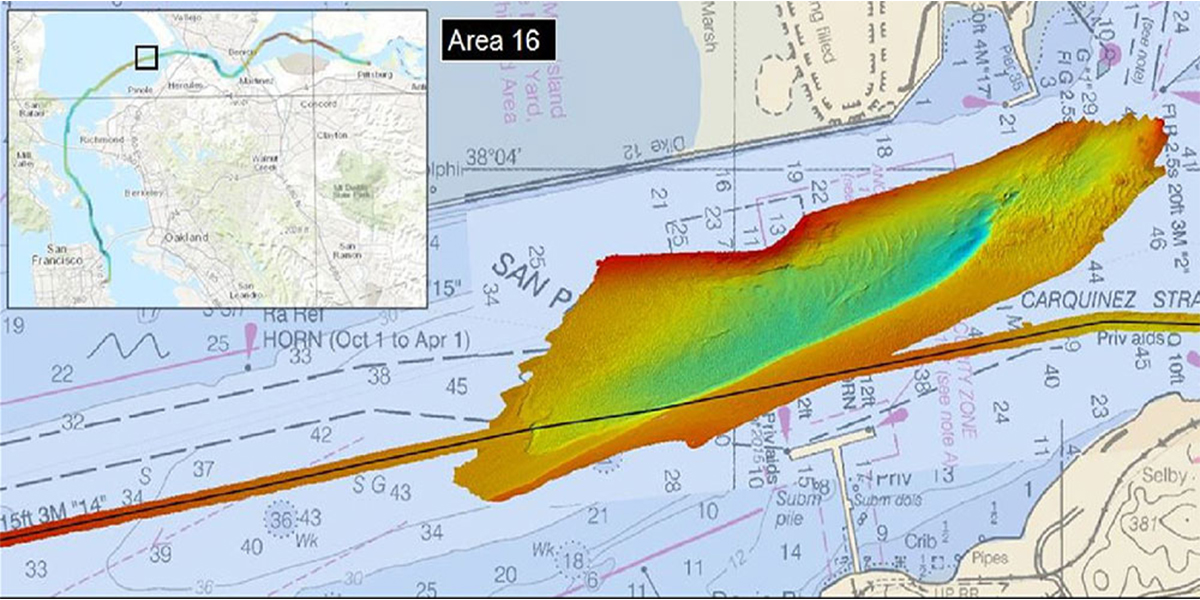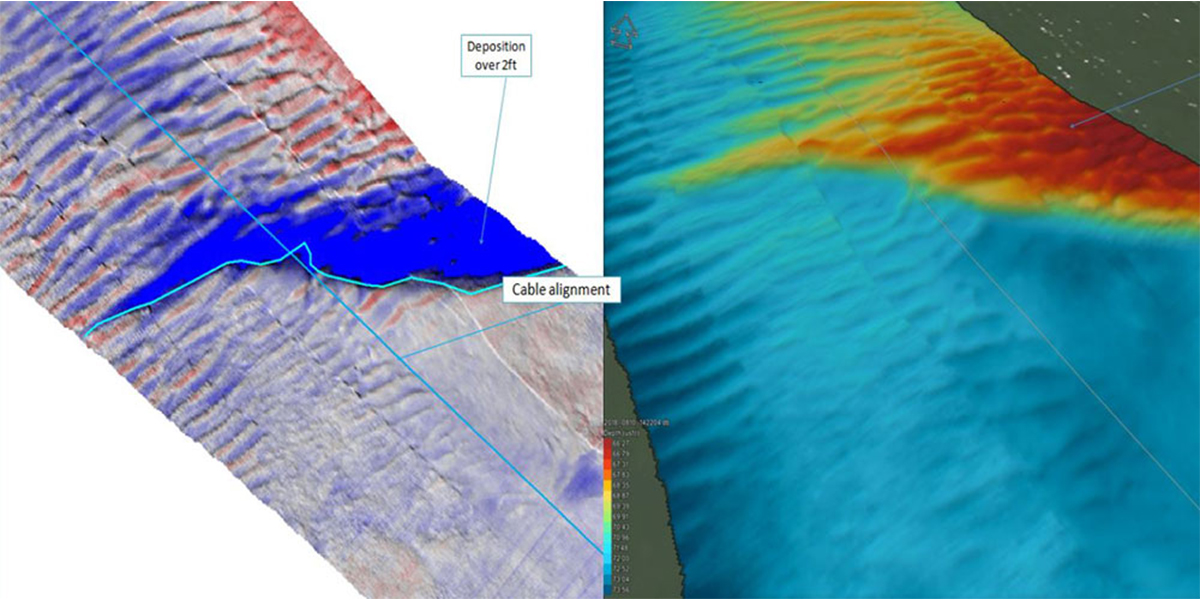Trans Bay Cable Route Analysis

Woolpert implemented a complete suite of geophysical surveys, including dual-head multibeam sonar systems with ultra-high-resolution MBES (700kHz) as well as a high-resolution (450kHz) and dual-head, ultra-high-density, to map the 50-mile Trans Bay Cable corridor from Pittsburg, CA, to San Francisco. Additional innovative techniques, including extended sonar mounts to place the sonar closer to the cable as well as angular mapping to define spaces between the cable and the seabed, were used. The team also performed the first 3D CHIRP survey of the cable to create a continuous depth of burial dataset. Finally, Woolpert's previous experience with the tripod-mounted micro-multibeam system Blueview BV5000 was included in the proposal to create high-definition 3D point cloud data for close-up imaging of certain areas/features as required to fill in any imagery gaps from the 700kHz multibeam data.

Personnel with extensive experience in the cable and pipeline industries performed a full cable risk assessment and rigorous data analysis. Areas of exposed cables were identified, measured, and detailed in a database along with a full inventory of hazards adjacent to the cable. All multibeam data was handled with Woolpert's QPS QINSy hydrographic data acquisition, navigation, and processing software package. A custom, scalable geodatabase was designed to house the various information collected during the survey. The layering of the various georeferenced datasets is possible using comprehensive GIS software tailored to the client’s needs.
Location
San Francisco Bay, CA

